Overshadowed by nearby Williamsburg and Jamestown, Yorktown played the deciding role in the Revolutionary War. In late 1781, George Washington defeated Lord Cornwallis at the Battle of Yorktown, ending years of turmoil and fighting. With its newfound independence, the United States began a democracy that has survived over 200 years.
With so much history, I’m surprised my father didn’t take me here on our trip back in the day. No matter – we’d see it now since Yorktown lies only 13 miles east of Williamsburg.
The Town
Heading straight to the downtown area, we instantly noticed Yorktown is a much quieter and calmer version of Williamsburg. Another major difference is the availability of free parking in several parking garages located across the street from the York River.
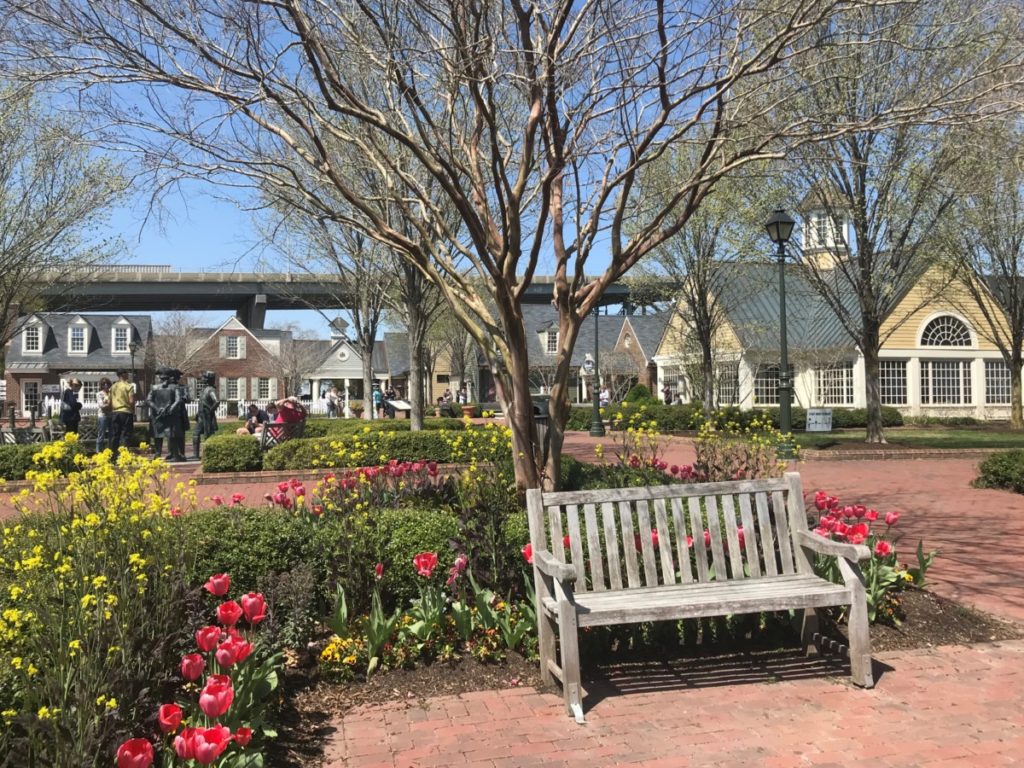
We parked at Riverwalk Landing and soon came to statues of George Washington, the Marquis de Lafayette and Francois Joseph Paul de Grasse seemingly enjoying a conversation. The brick-paved walkway took us to Yorktown Beach just a few yards away. Yes – you read that correctly. Yorktown Beach lies right on Water Street in the main part of town.
We stopped for a quick lunch at Yorktown Pub. Sitting outside, I had trouble getting a feel for the town. It’s obviously historically significant, but beachgoers sunbathed across the street from us and the 3,700 foot tall Coleman Bridge (more in keeping with a large metropolis) loomed over the York River.
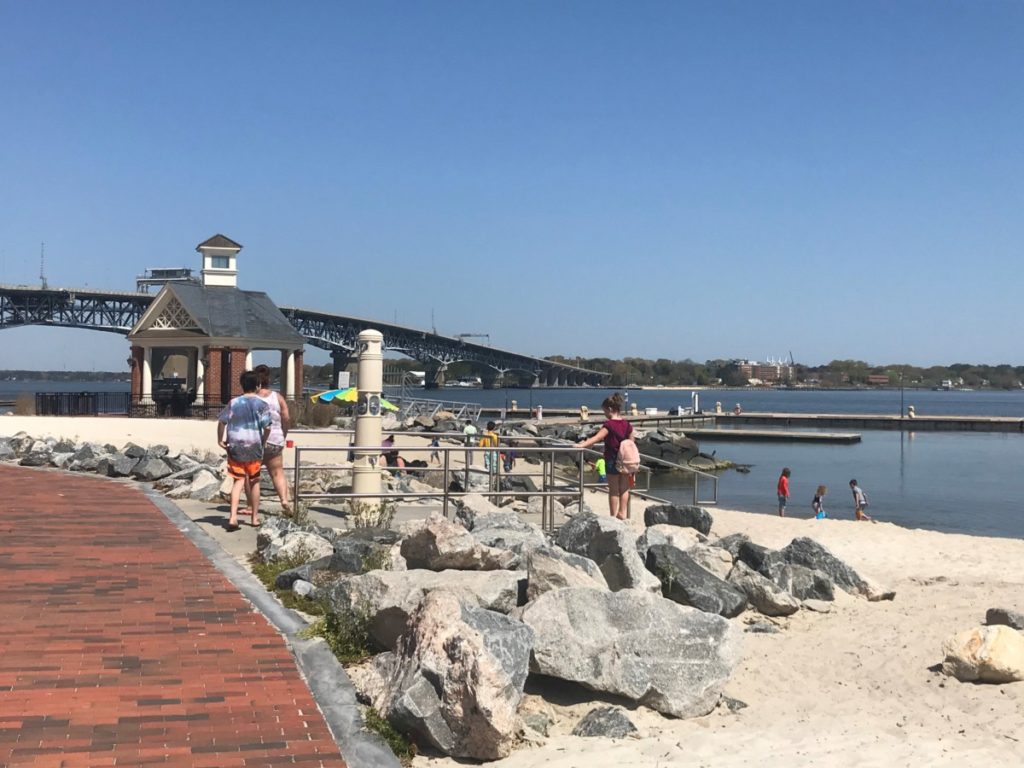
I still would spend the night in Willilamsburg. While larger than Jamestown and offering restaurants I gather people come here for day trips only. I didn’t see many hotels.
The Battlefield
We drove to the Yorktown Battlefield, which is part of the Colonial National Historical Park. Away from the river, the area seemed more historic. At the visitor center, we showed our tickets from Historic Jamestowne which allowed us free entry. Otherwise, admission is $15. The visitor center offers a short film of introduction and snacks to purchase.
The ranger suggested we download the free Yorktown Guide App and follow the map on the brochure. Because of Covid, the Moore House, Nelson House and Yorktown Battlefield Museum were closed. We knew this before arriving but decided to still visit since we had free admission.
Thank goodness for the app! To me, battlefields are mostly the same. Without historical context, I find them boring with lots of grassy fields and a few cannons. The app offered two audio tours regarding the battle: the Battlefield Tour and the Allied Encampment Tour. Encompassing 16 miles of roads, we could listen to the app as we drove and decide what stops to make.
The Battlefield Audio Tour
Soon in my mind’s eye, what seemed like a field of grass became the first siege line. Two earthen “hills”, called Redoubts 9 and 10 highlighted where the French and American troops overtook the British to secure the second siege line.
Anticipating defeat, Britain’s Cornwallis suggested a meeting at the Moore House. The white wooden house located on a 500-acre plantation in a neutral spot had been vacated by the Moore’s during the siege. In normal times, the park service allows visitors to tour the house which they restored in 1934.
Allied Encampment Audio Tour
The second part of the tour took us around campsites for the French and American troops, as well as a French cemetery. What struck me during this part of the audio tour was how much the French stepped in for the Continental Army. Without them, United States wouldn’t have won its independence.
Historic Yorktown Audio Tour
A third portion of the audio tour contained information about historic Yorktown. Since this included a walking tour and the Thomas Nelson House, which was also closed due to the pandemic, we skipped it and headed to our next destination. For more information about the battlefield, click the Colonial National Historical Park’s website here.
Museum of the American Revolution
My memory of the American Revolution is a bit rusty. As a child, I thought the Revolutionary War ended in 1776 – the date of the Declaration of Independence. In fifth grade, I thought the textbook was wrong when it said the war ended with the Battle of Yorktown in 1781. That’s a whole 5 years later. Interestingly enough, the official date of the end of the Revolutionary war is September 3, 1783. But the Battle of Yorktown ended on October 19, 1781. Fortunately, we were in the right place to find out.
The Museum of the American Revolution, which only opened in 2017, takes visitors through a visual history lesson from the 1760s to the 1780s. With timelines, maps, artifacts and a couple of films, I began recalling key events and people.

We asked one of the guides about the correct date of the American Revolution. He explained the Battle of Yorktown ended the major fighting. However, in early 1782, Benjamin Franklin, John Adams and several other important statesmen traveled to France to begin long months of ironing out the details. King Geoge II and the American statesmen signed the Treaty of Paris in September 1783. Even so, the United States didn’t ratify it until January 1784. He told us to look for a painting near the end of the exhibit which shows the Americans at the signing table. The British refused to be painted.
We watched the multi-sensory film regarding the Battle of Yorktown. The 10-minute film, aptly named “The Siege” produced cannon smoke, shook our seats and literally put us in the middle of the battle. Departing the theatre, we saw the painting the guide had mentioned.
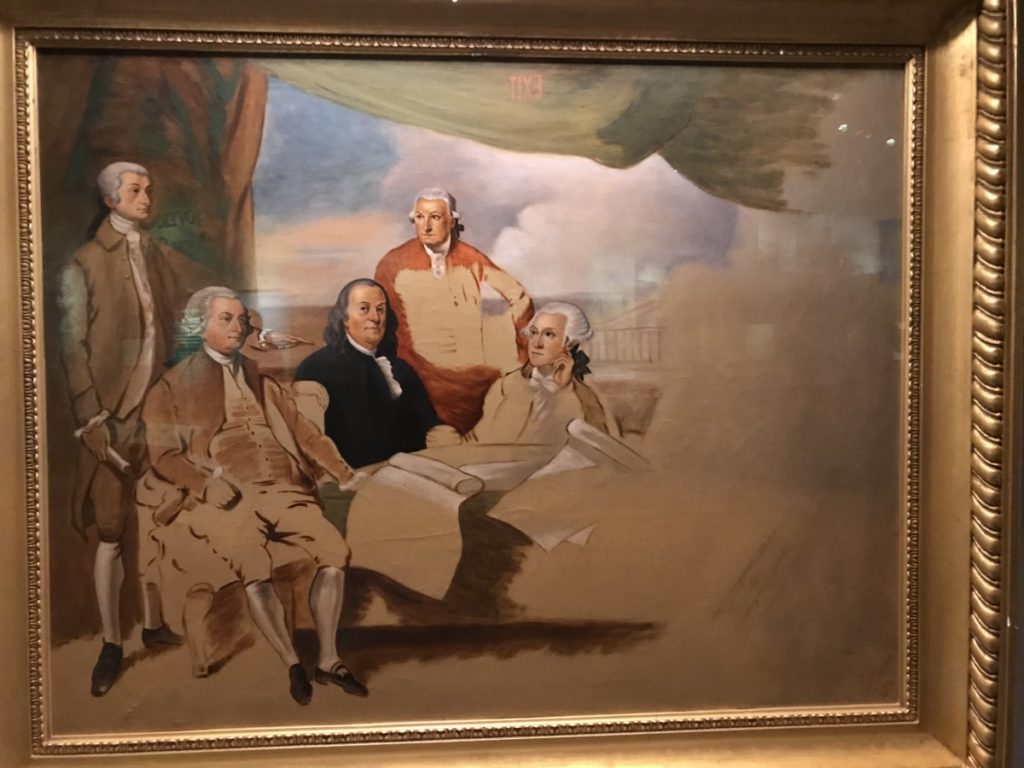
Outdoor Living History
We then went to the outdoor living history section. Tons of white tents set up in neat rows greeted us. “So this is what the encampments would have looked like,” I said to my daughter. A guide dressed in period costume explained the different types of gunpowder they would have used. Walking around, I could see how the tent offered little protection from cold, rain and all the elements.
After the encampment, we came to a Virginia farm. Interpreters explained different tools and uses for various buildings. I was surprised the farmhouse seemed small for such a large farm. The interpreter said that the first order of business for a farm was to build a simple one-room house to provide shelter for the family. The second priority was to get crops planted and farm operations up and running. Depending on the success of the farm, additions to enlarge the farmhouse might be undertaken at a later date.
About the time, the announcement for the final cannon firing demonstration of the day rang out. Sitting in the amphitheater, we learned about weapons in the ward before covering our eyes for the loud bang.
For more information about the museum, click their website here.
In Summary
I recommend spending an entire day here. However, I think I would visit the Museum of the American Revolution first to get a good overview of what was happening during the time period. If I were traveling with small children, I would definitely take them here as the living history exhibits would make a better impact on them.
The Battlefield is neat to see where actual events occurred. If I were short on time, I’d only do the first part of the driving tour, not the encampments. If I had longer and things were open, I’d go inside the Moore House, as well as doing the walking tour and visiting the Nelson House. The American History museum is probably good too, I just don’t know if it would be a repeat of the Museum of the American Revolution.

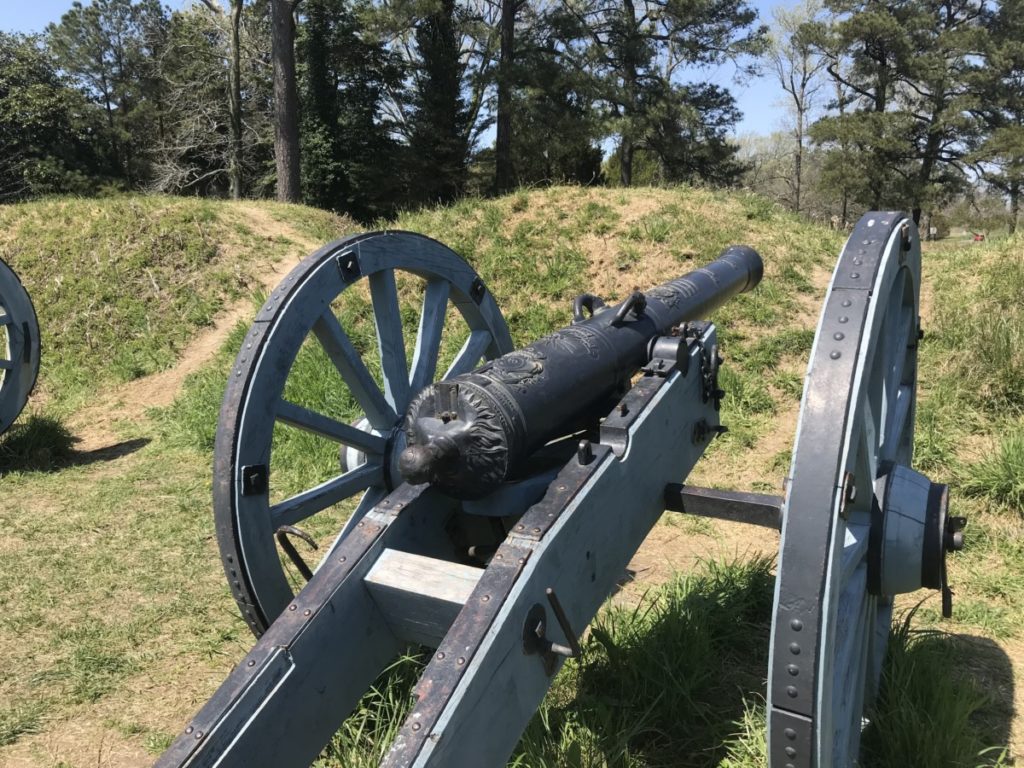
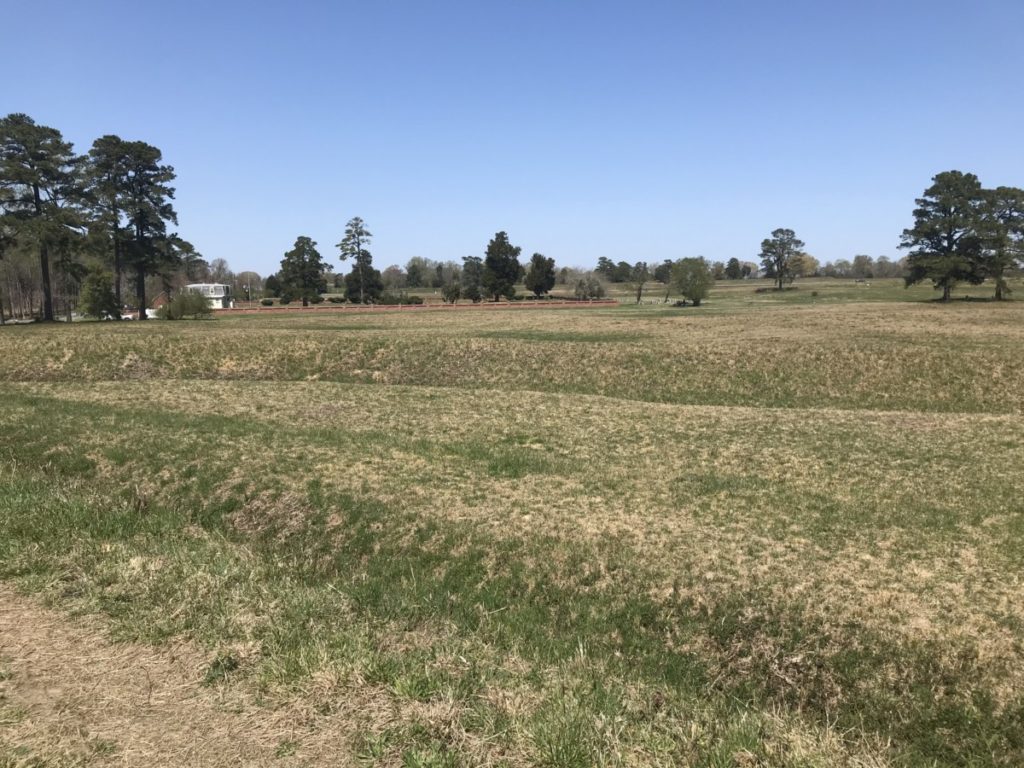
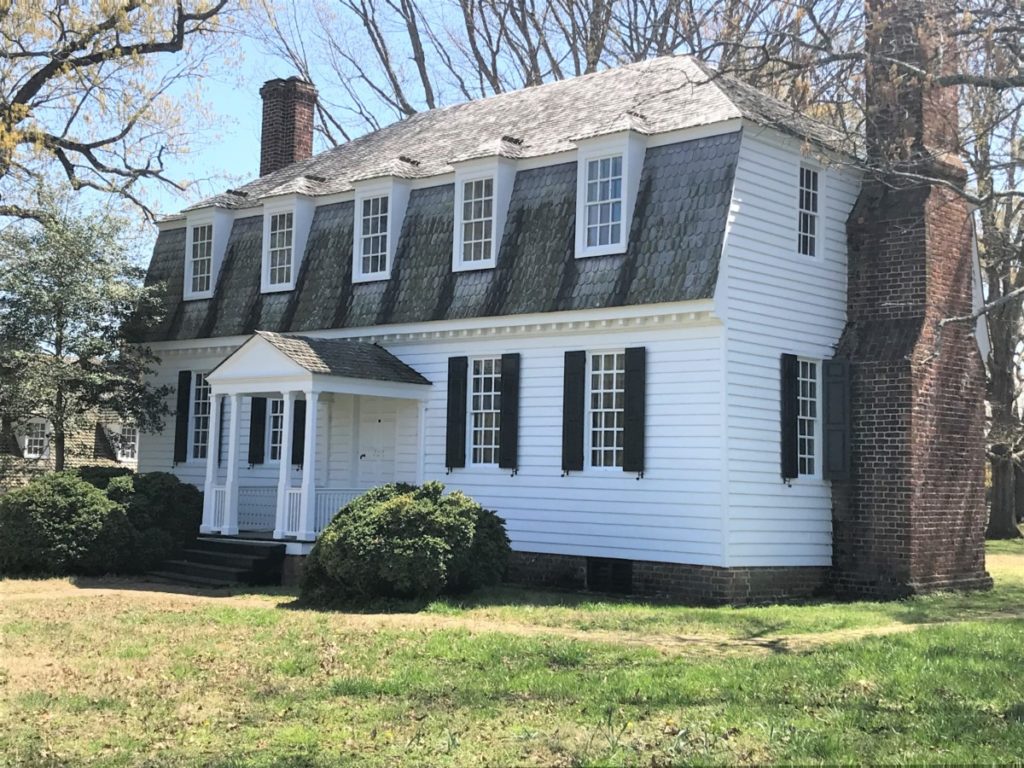
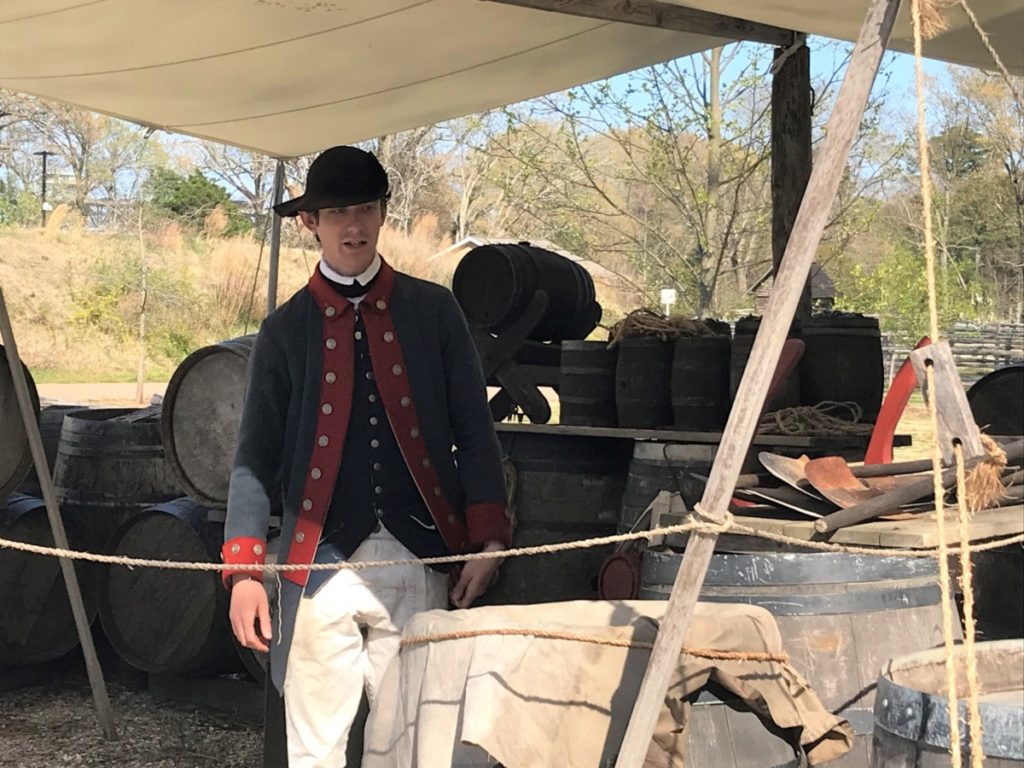
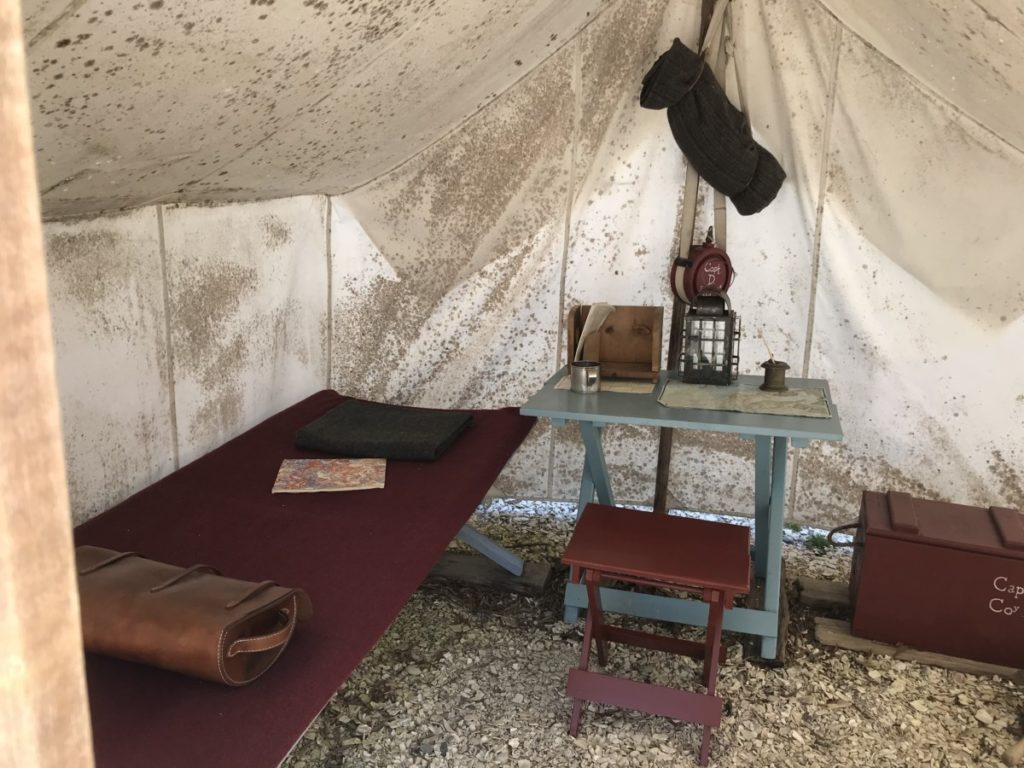

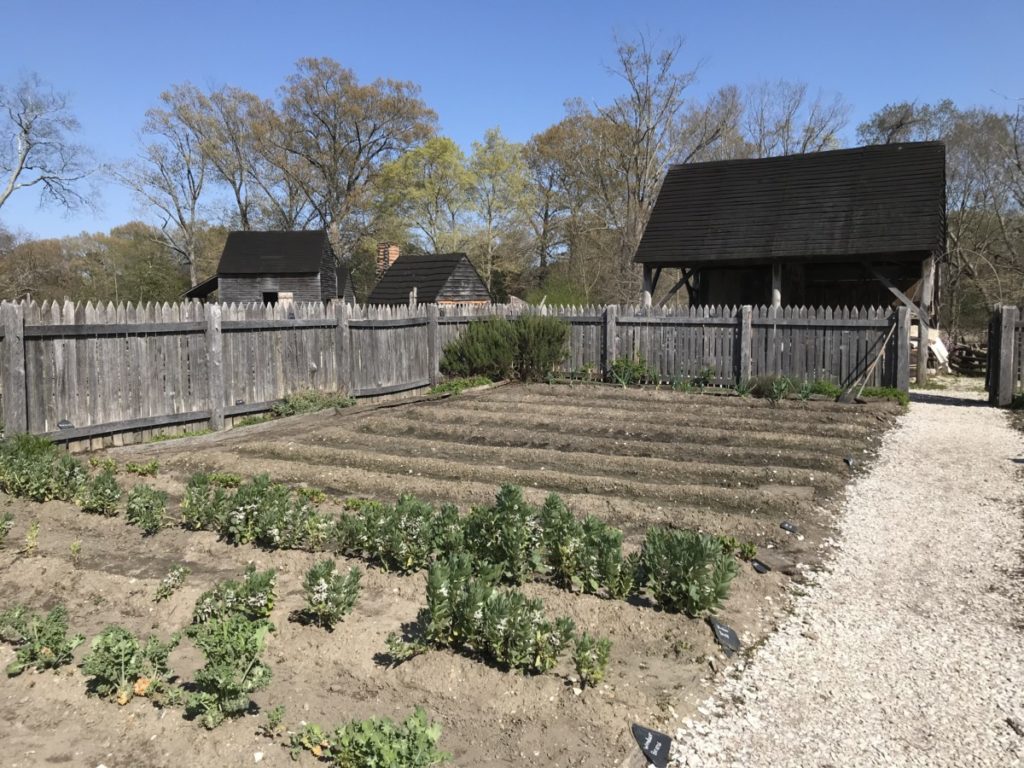
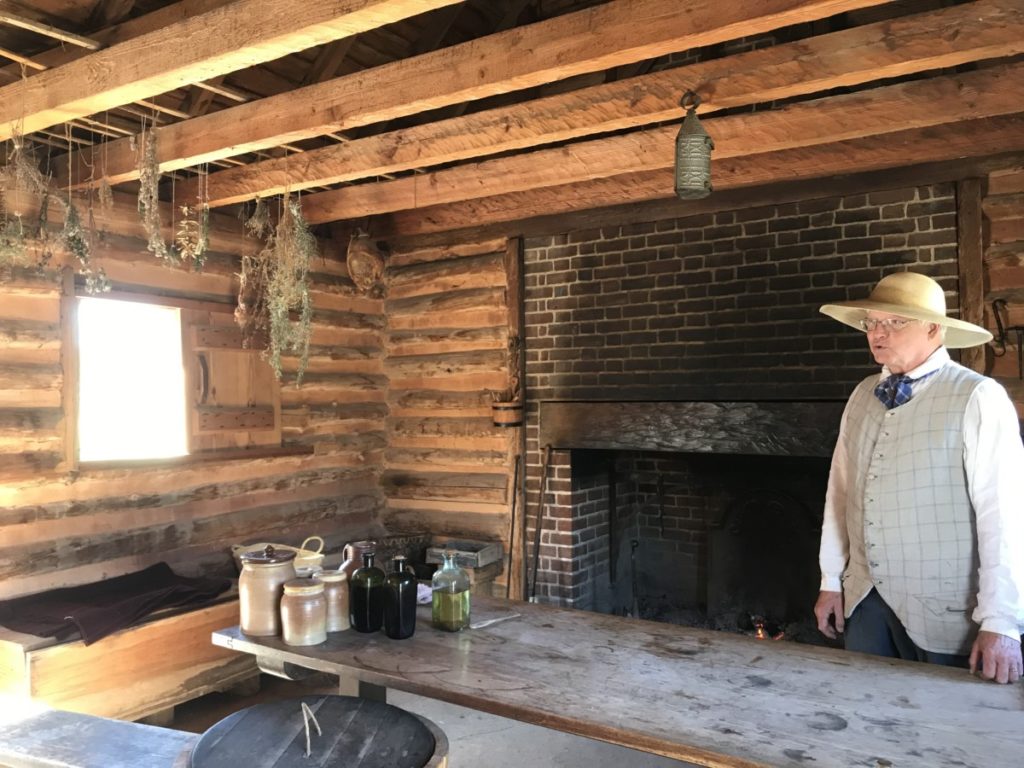
Pingback: The National Mall and Memorial Parks - Washington DC - Part 1 • Finding Family Adventures